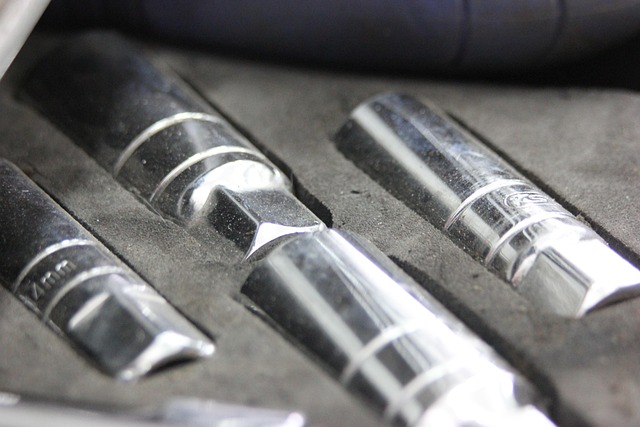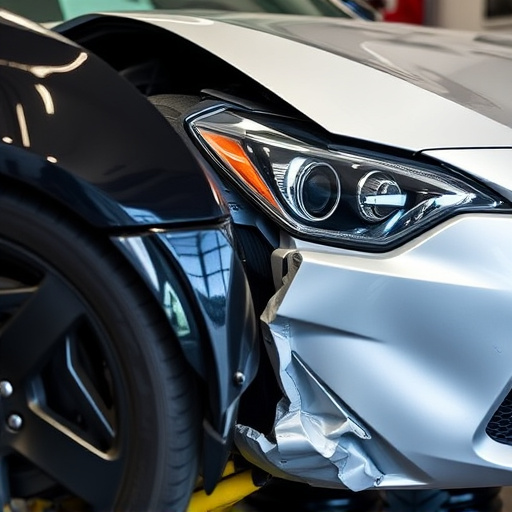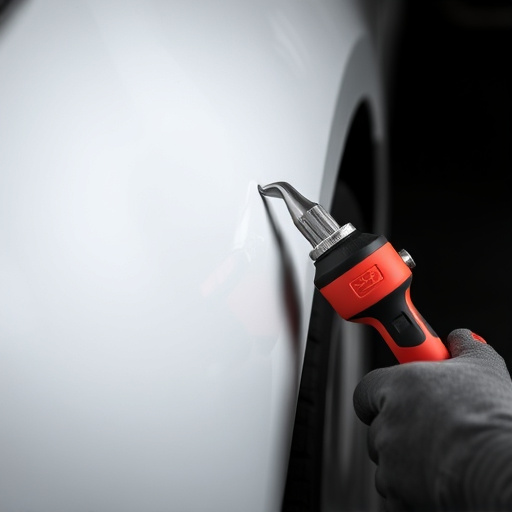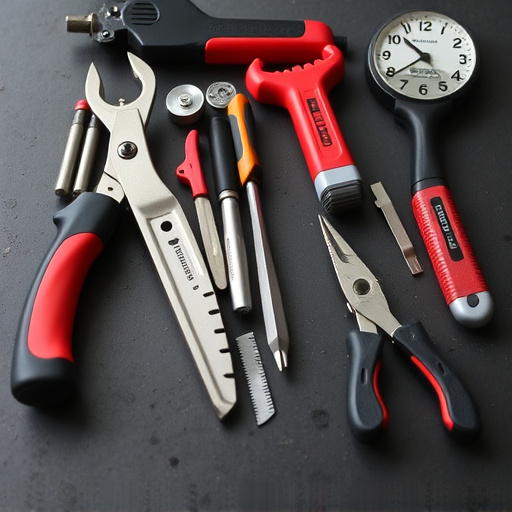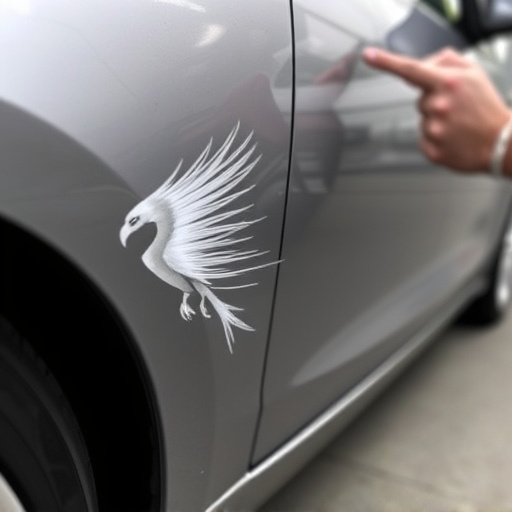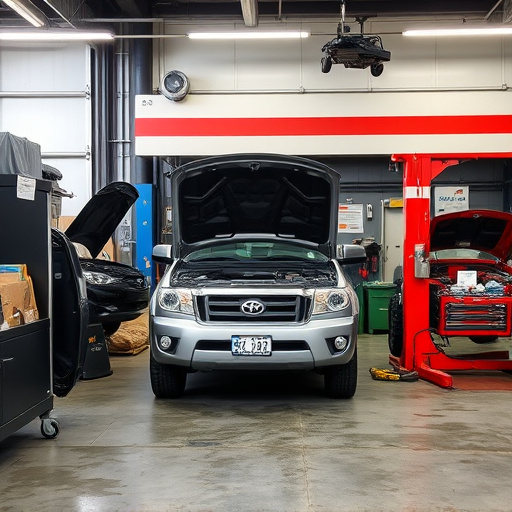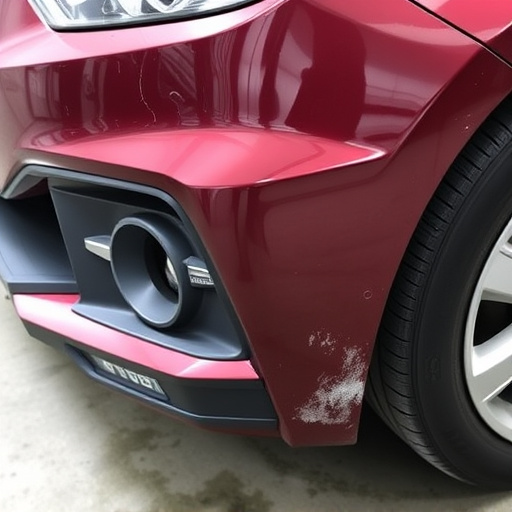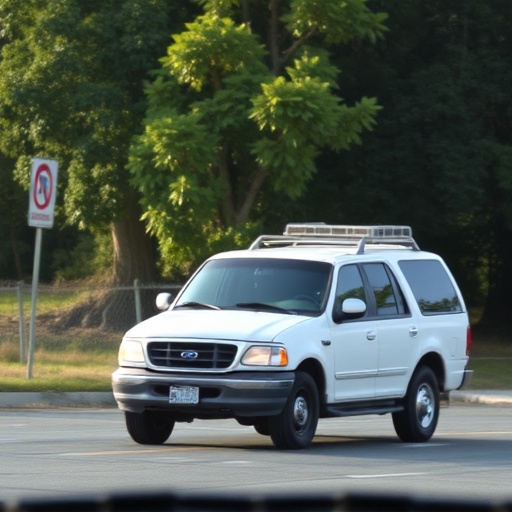Rocker panel replacement in electric vehicles (EVs) requires specialized knowledge and precision to maintain structural integrity, cooling systems, and performance. Unique challenges include accessing complex electrical systems and battery packs beneath the exterior, demanding careful disassembly and de-powering. A step-by-step guide ensures efficient repair: assess damage, gather compatible parts, remove old panel, prepare and attach new one, let adhesive set, sand edges, prime, and paint for a seamless finish.
Rocker panels, essential for both structural integrity and aesthetic appeal, pose unique challenges when repairing electric and hybrid vehicles. Unlike their conventional counterparts, these vehicles’ lightweight designs and complex systems require specialized knowledge and techniques for effective rocker panel replacement. This article delves into the intricacies of rocker panels in electric vehicles, explores the complexities of hybrid models, and provides a comprehensive, step-by-step guide to ensure efficient repairs, catering to both professionals and enthusiasts tackling these modern vehicle types.
- Understanding Rocker Panels in Electric Vehicles
- Challenges of Replacement in Hybrid Cars
- Step-by-Step Guide to Efficient Rocker Panel Repair
Understanding Rocker Panels in Electric Vehicles

Rocker panels are an essential component in the exterior structure of electric vehicles (EVs). These panels serve multiple functions, including protecting the vehicle’s sides from impact and providing structural integrity. In EVs, rocker panels also play a crucial role in managing airflow around the vehicle, which is vital for cooling systems and overall efficiency. When it comes to repairs, especially after accidents or damage, understanding the unique aspects of rocker panel replacement in EVs is key. This process requires specialized knowledge and tools to ensure the panel is seamlessly integrated back into the vehicle’s design, maintaining both structural integrity and aesthetic appeal, all while keeping the vehicle’s advanced systems operating smoothly.
In electric vehicle repair services, rocker panel replacement goes beyond standard auto glass repair or general vehicle repairs. It demands precision and an understanding of the EV’s specific design elements. With the rise of EVs on the road, being equipped to handle these specialized repairs is becoming increasingly important for vehicle repair professionals. This ensures that electric vehicles receive the expert care they need, maintaining their performance and safety on the road.
Challenges of Replacement in Hybrid Cars
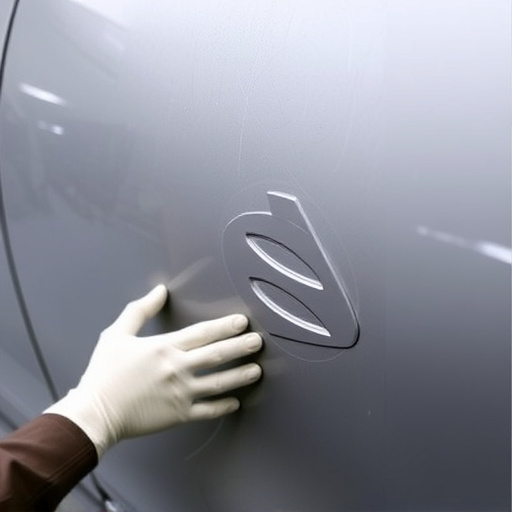
Replacing rocker panels on electric and hybrid vehicles presents unique challenges compared to conventional internal combustion engine cars. One of the primary difficulties lies in the intricate electrical systems and battery packs often located beneath the vehicle’s exterior. Accessing the rocker panels, which may be integrated into these components, requires careful disassembly and de-powering to avoid any potential short circuits or damage to sensitive parts.
Moreover, hybrid vehicles’ advanced safety features, such as collision avoidance systems and complex sensor arrays, are often housed within or near the rocker panels. During a collision damage repair or bumper repair, these components must be handled with precision and care to ensure proper function after the rocker panel replacement. The process demands specialized knowledge and tools to navigate this delicate balance between aesthetics and functionality, ultimately contributing to a successful car restoration.
Step-by-Step Guide to Efficient Rocker Panel Repair
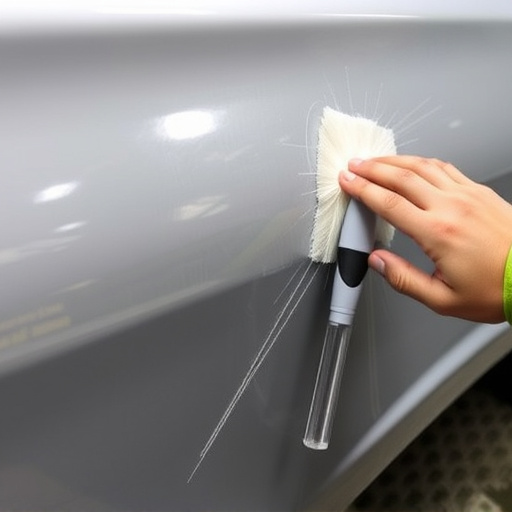
The rocker panel, a crucial component for any vehicle’s aesthetics and structural integrity, often requires replacement due to damage from road debris, accidents, or general wear and tear. For electric and hybrid vehicles, this process demands careful consideration as these cars have unique challenges. Here’s a step-by-step guide to ensure an efficient rocker panel repair:
1. Begin by assessing the extent of the damage. Inspect the rocker panel for cracks, dents, or any signs of severe degradation. In some cases, minor damage can be repaired with auto painting and body work, but for more significant issues, a complete replacement might be necessary.
2. Gather the required tools and materials: this includes specialized rocker panel replacement parts, industrial strength adhesive, primers, and paints suitable for your vehicle’s surface. Remember, ensuring compatibility with your specific electric or hybrid model is paramount to avoid potential issues during the repair process.
3. Remove any loose debris from around the damaged area. Next, carefully demount the affected rocker panel by loosening the screws or clips securing it in place. This step often requires a variety of tools, including sockets, ratchets, and sometimes even heat guns for stubborn fasteners.
4. Prepare the new rocker panel by cleaning and decontaminating it to ensure a clean installation. Once ready, carefully align and attach the replacement part using the appropriate adhesive and fastening methods. Ensure all components fit snugly together.
5. After the initial setup, allow the adhesive to set as per the manufacturer’s instructions. Following this, sand any rough edges and prepare the panel for painting by applying primer and then a final coat of paint that matches your vehicle’s original color. This step is crucial in achieving a seamless finish.
Rocker panel replacement is a critical aspect of electric and hybrid vehicle repairs, addressing structural integrity and aesthetic appeal. Understanding the unique challenges posed by these vehicles, such as the integration of advanced battery systems, is essential for efficient repairs. By following a step-by-step guide tailored to these models, technicians can ensure precise and long-lasting rocker panel replacements, contributing to the overall durability and value of these innovative vehicles.




